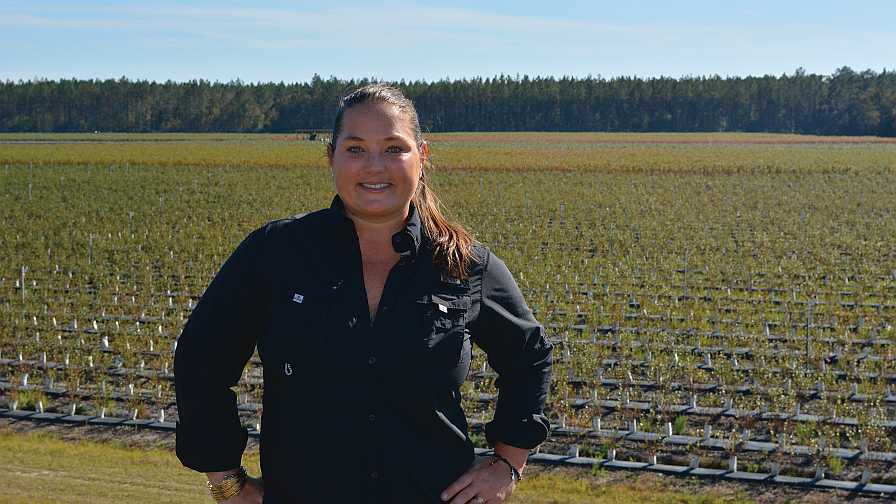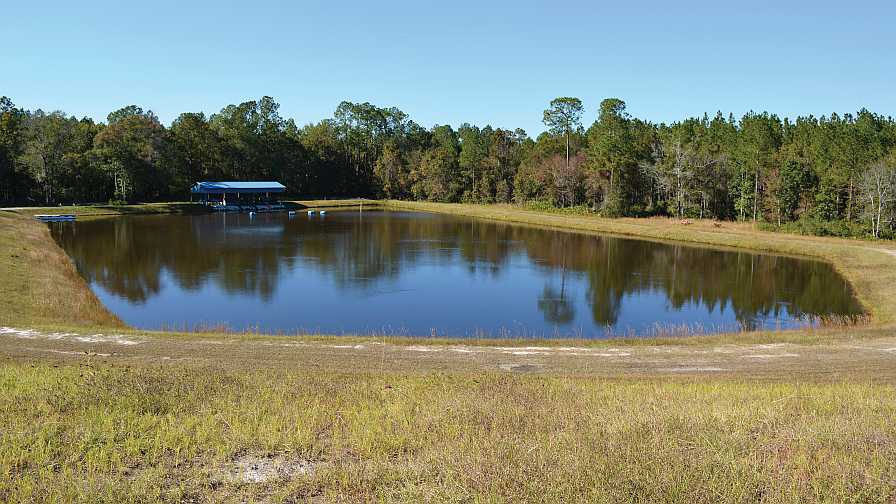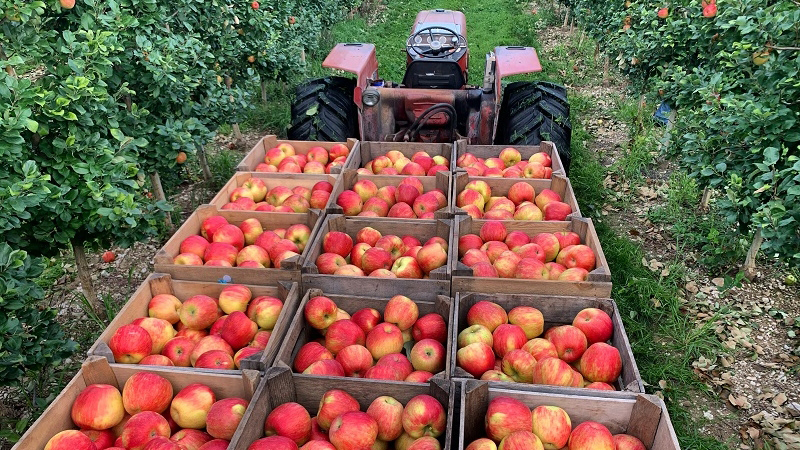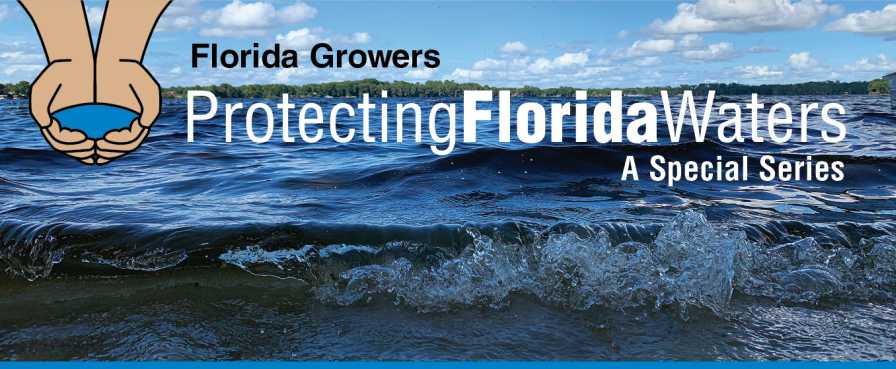Data Drives Conservation on Florida Blue Farms

Brittany Lee of Florida Blue Farms in Waldo uses data collected on the farm to increase water-use efficiency and to optimize fertilizer applications.
Photo by Frank Giles
When you visit Florida Blue Farms’ web page, the following statement on their business captures their core values: “We believe in faith and family, and we are committed to conservation through land stewardship and protecting our natural resources.”
Protecting water resources on the Waldo, FL, blueberry farm is a top consideration in all production decisions. Brittany Lee runs the operation and deploys several tactics to conserve water and reduce the chances of nutrient runoff into waterways. And other growers are taking notice. In 2017, Lee received the Florida Department of Agriculture and Consumer Services (FDACS) Commissioner’s Environmental Leadership Award for her stewardship on the farm.
Data = Decisions
Lee, a self-confessed technology geek, is utilizing a number of technologies to maximize efficiency and production on the farm. The latest tool is soil probes that provide a wide array of data.
“It is like having little computer geniuses in the soil,” she says. “We started using them last fall and are using the data to pulse irrigate the blueberries during the summer to avoid over saturating the plants. It is helping us conserve water. The Sentek probes provide all sorts of analytics to help conserve water, but also data on fertility. It will alert you were the fertilizer (salinity) is in the soil profile, which allows us to manage irrigation, so we don’t push the nutrients below the root zone.”
Lee says it is hard to exactly quantify water savings using the probes and pulsing the irrigation, but the amount is significant. Lee worked with Trenton-based BMP Logic to install the probes, and the company provides consulting services and a software platform to maximize the data. The online software platform called IRIS gives visibility and provides the analytics to save water and conserve fertilizer.

The 2-acre tailwater recovery pond on the property of Florida Blue Farms holds nearly 8 million gallons of water and can capture up to 80% of irrigation runoff, according to Brittany Lee.
Photo by Frank Giles
The built-in artificial intelligence of the software shows growers plant rooting depth and irrigation infiltration. Armed with this intelligence, the farm addresses two major concerns in Florida — water quantity and water quality. It also meets the standards of the FDACS BMPs program designed for specialty crops. BMP Logic also assists growers seeking cost-share dollars on water stewardship practices and/or products.
But the data doesn’t stop there. Across the farm multiple weather stations from Rainwise, Metos, and Highland Ag Solutions are deployed. They are particularly useful during freeze events to gather data used to turn water on and off at the right time to protect plants. This precise application of freeze protection results in significant water savings compared to traditional practices. Lee says the farm can count on at least one freeze event per winter.
A Netafim PRO control panel runs the farm’s drip irrigation system and fertigation. Fertigation is applied by zones in the fields to meet specific plant needs, which can vary by soil type and even variety.
Low-Tech but Big Impact
When planning the design of the farm in 2007, Lee laid out fields where water would flow toward the backside of the property where a 2-acre tailwater recovery pond was dug to reclaim irrigation and rainwater. The pond holds nearly 8 million gallons of water.
“When we have freeze events, we have been able to reduce our groundwater usage by 50% by using water from the tailwater pond,” she says. “The way we have the farm laid out to catch the water in the pond, we are recycling 75% to 80% of the water we apply on the farm.”
This is the second in a series of articles featuring growers who are taking a proactive approach to protecting the water resources on and around their farms. The stories will investigate how production practices, equipment, and technology are helping growers in the Sunshine State do more to protect water. Come back next month for another installment.










